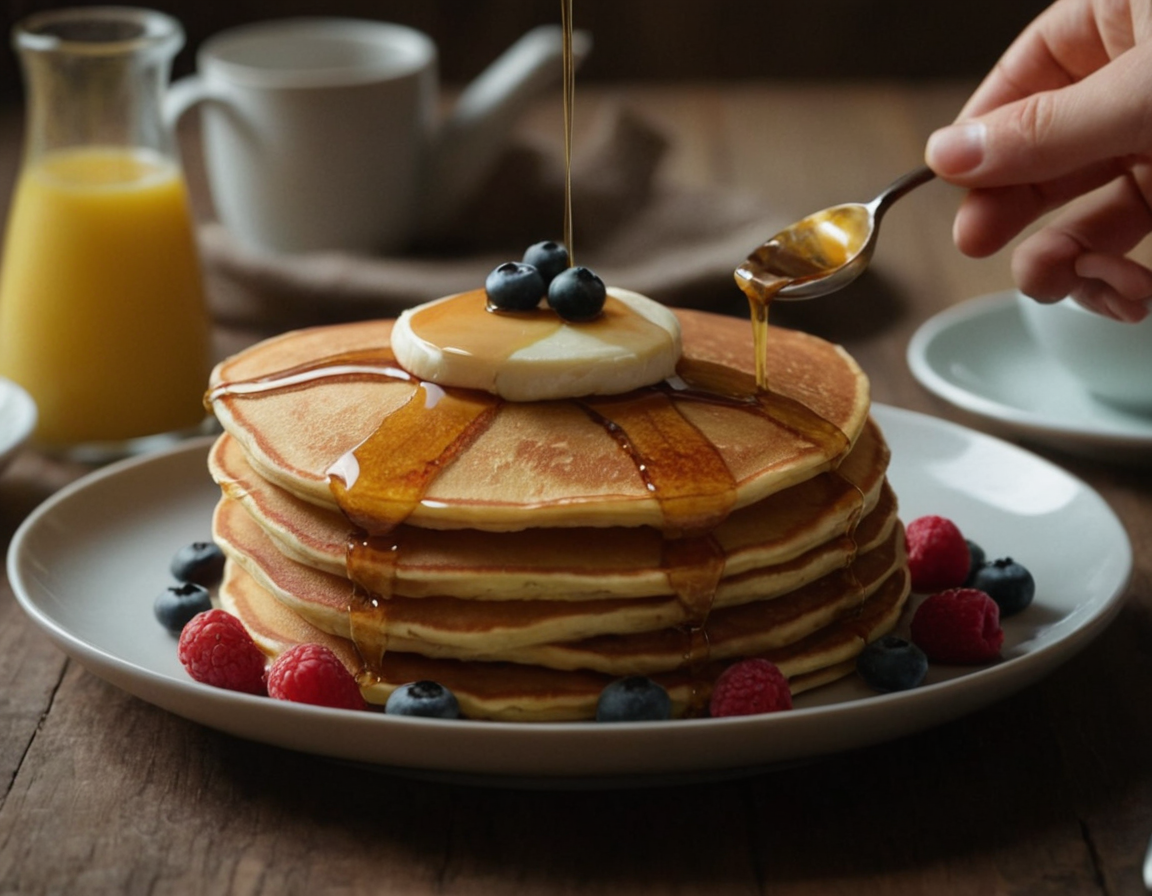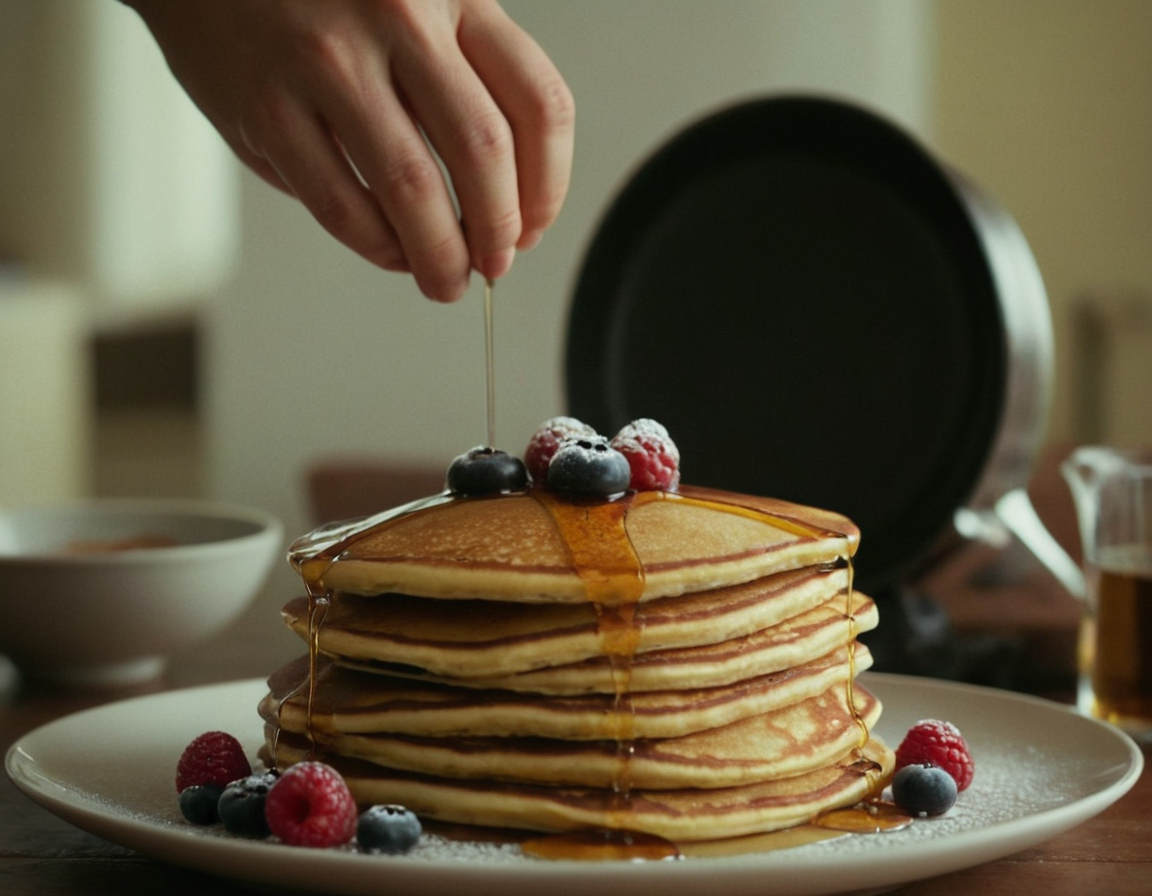What is the Secret to Making the Best Pancakes?
Introduction
For many, pancakes are more than just a breakfast dish—they’re a comforting start to the day and a family favorite. Yet, the pursuit of the perfect pancake can often seem elusive. What’s the secret to making pancakes that are fluffy, golden, and irresistibly delicious? Let’s dive into the essential tips and tricks to make the best pancakes every time.
Understanding Pancake Basics
Key Ingredients for Pancakes
To start, let’s break down the basic ingredients that make up a pancake:
- Flour: The backbone of the pancake. All-purpose flour is typically used for its balanced texture and consistency.
- Eggs: These provide structure and help bind the ingredients together.
- Milk: Adds moisture and helps to create the desired batter consistency.
- Baking Powder: This leavening agent is crucial for achieving the fluffy texture of pancakes.
The Role of Each Ingredient
Each ingredient plays a significant role in the final outcome. Flour gives structure, eggs provide richness, milk adds moisture, and baking powder ensures fluffiness. Understanding these roles can help you tweak the recipe to your liking.
The Secret to Fluffy Pancakes
Choosing the Right Flour
For the fluffiest pancakes, use all-purpose flour. It strikes a perfect balance between softness and strength, making it ideal for pancakes. If you prefer a healthier option, you can experiment with whole wheat flour, but keep in mind that it will yield a denser texture.
Using the Correct Baking Powder Ratio
Baking powder is essential for fluffiness. The general rule is to use about 1 to 2 teaspoons of baking powder per cup of flour. Too little will result in flat pancakes, while too much can cause a metallic taste.
The Importance of Buttermilk vs. Regular Milk
Buttermilk reacts with baking powder to create even fluffier pancakes. If you don’t have buttermilk, you can make a substitute by adding a tablespoon of lemon juice or vinegar to a cup of regular milk and letting it sit for 5 minutes.
Mixing Techniques
How to Mix Ingredients Properly
Mixing the batter is a crucial step. Combine the dry ingredients in one bowl and the wet ingredients in another. Then, gently fold the wet ingredients into the dry. Overmixing can result in dense pancakes, so mix until just combined.
Avoiding Common Mixing Mistakes

One common mistake is overmixing the batter. This can develop the gluten in the flour, making the pancakes tough. Aim for a few lumps in your batter; it’s perfectly fine.
Resting the Batter: Why It Matters
Letting the batter rest for about 5-10 minutes allows the flour to fully absorb the liquid and results in a smoother texture. This step also helps in achieving a lighter, fluffier pancake.
Cooking Tips
Optimal Pan Temperature
Preheat your pan over medium heat. A properly heated pan is key to golden-brown pancakes. You can test it by sprinkling a few drops of water on the pan; if they sizzle and evaporate, it’s ready.
Using the Right Type of Pan
A non-stick skillet or griddle is ideal for cooking pancakes. These surfaces help prevent sticking and ensure an even cook.
The Perfect Pancake Flip
Wait until bubbles form on the surface of the pancake before flipping. Use a spatula to gently lift and flip the pancake, cooking for another minute or so until golden brown on both sides.
Creative Variations
Adding Fruits and Nuts
Mix in blueberries, bananas, or chopped nuts for added flavor and texture. You can also use fruit preserves or chocolate chips as a topping.
Incorporating Spices and Flavorings
Try adding cinnamon, vanilla extract, or a pinch of nutmeg to your batter for a flavorful twist.
Making Pancakes Ahead of Time
Cooked pancakes can be frozen for up to a month. Simply place them in a single layer on a baking sheet, freeze until solid, then transfer to a zip-top bag. Reheat in the toaster or microwave.
Serving Suggestions
Classic Toppings
Top your pancakes with maple syrup, butter, or fresh fruit. For a decadent treat, add a dollop of whipped cream or a sprinkle of powdered sugar.
Innovative Serving Ideas
Try serving pancakes with yogurt and honey, or layer them with fruit compote and granola.
Pairing Pancakes with Other Breakfast Dishes
Pancakes go wonderfully with scrambled eggs, bacon, or sausage. Create a full breakfast spread for a hearty morning meal.
Troubleshooting Common Pancake Problems
Dense Pancakes
If your pancakes are dense, it may be due to overmixing or not using enough baking powder. Check your ingredient measurements and mixing technique.
Uneven Cooking
Uneven cooking can result from an improperly heated pan. Ensure your pan is preheated evenly before pouring in the batter.
Burnt Pancakes
Adjust the heat if your pancakes are burning. Cooking at too high a temperature can lead to burnt exteriors and raw interiors.
Conclusion
Making the best pancakes is all about understanding the basics, mastering your technique, and being open to experimentation. With these tips and secrets, you can create pancakes that are fluffy, flavorful, and sure to please everyone at the breakfast table. Enjoy your perfect pancakes!

FAQs
- Why do my pancakes turn out dense?
- Dense pancakes often result from overmixing the batter or using too little baking powder. Ensure you mix just until combined and use the correct leavening agent ratio.
- How can I make my pancakes fluffier?
- Use buttermilk instead of regular milk, and make sure not to overmix the batter. Allow the batter to rest before cooking.
- Can I use whole wheat flour instead of all-purpose flour?
- Yes, but be aware that whole wheat flour will produce denser pancakes. You might want to combine it with all-purpose flour for a lighter texture.
- What’s the best way to keep pancakes warm before serving?
- Place cooked pancakes on a baking sheet in a warm oven (about 200°F) while you finish cooking the rest.
- Can I freeze pancakes for later use?
- Yes, freeze cooked pancakes in a single layer on a baking sheet, then transfer to a zip-top bag. Reheat in a toaster or microwave.

